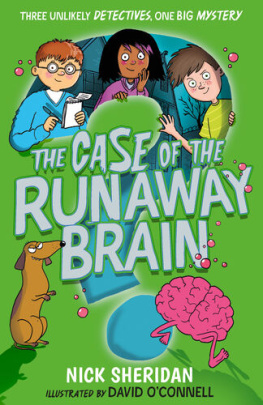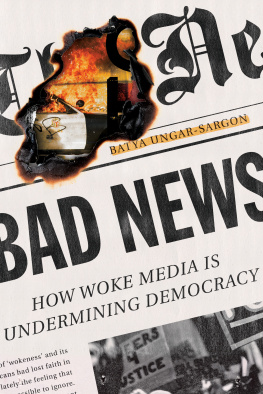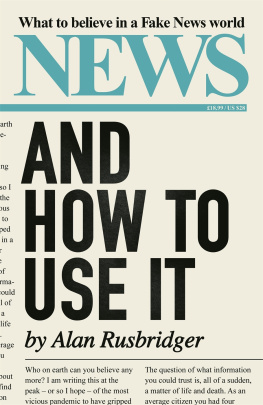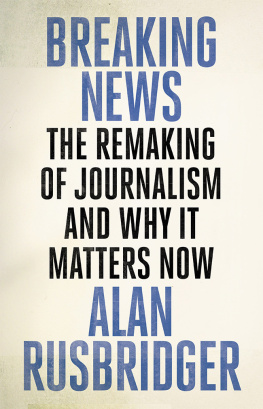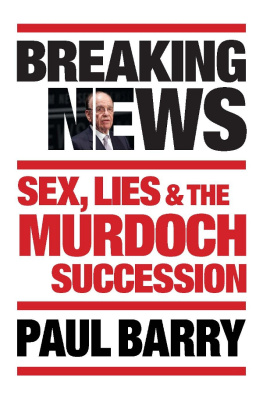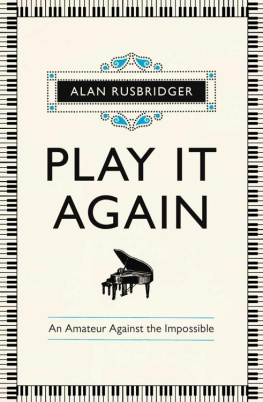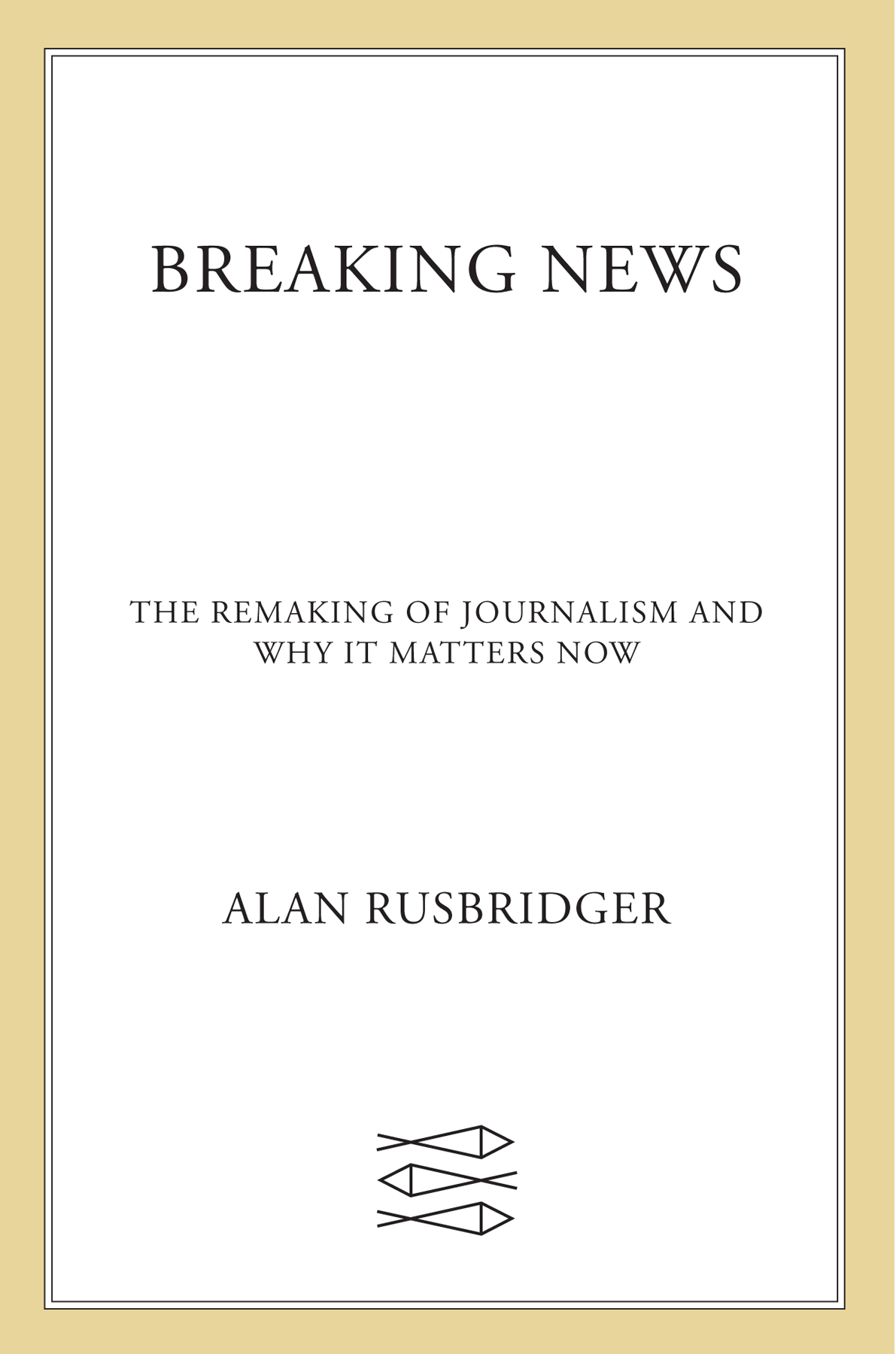The author and publisher have provided this e-book to you for your personal use only. You may not make this e-book publicly available in any way. Copyright infringement is against the law. If you believe the copy of this e-book you are reading infringes on the authors copyright, please notify the publisher at: us.macmillanusa.com/piracy.
By early 2017 the world had woken up to a problem that, with a mixture of impotence, incomprehension and dread, journalists had seen coming for some time. News the thing that helped people understand their world; that oiled the wheels of society; that pollinated communities; that kept the powerful honest news was broken.
The problem had many different names and diagnoses. Some thought we were drowning in too much news; others feared we were in danger of becoming newsless. Some believed we had too much free news: others, that paid-for news was leaving behind it a long caravan of ignorance.
No one could agree on one narrative. The old media were lazy and corrupt: and/or the new players were greedy and secretive. We were newly penned into filter bubbles: rubbish they had always been there. There was a new democracy of information: bunkum the mob were now in control. The old elites were dying: read your history power simply changes shape.
On this most people could agree: we were now up to our necks in a seething, ever churning ocean of information; some of it true, much of it wrong. There was too much false news, not enough reliable news. There might soon be entire communities without news. Or without news they could trust.
There was a swamp of stuff we were learning to call fake news. The recently elected 45th President of the United States, Donald Trump, used the term so indiscriminately it rapidly lost any meaning. The best that traditional journalism could offer was or so he repeatedly told us fake. We should believe him, not lying journalists.
Truth was fake; fake was true.
And thats when the problem suddenly snapped into focus.
Throughout recent centuries anyone growing up in a western democracy had believed that it was necessary to have facts. Without facts, societies could be extremely dark places. Facts were essential to informed debates, to progress, to coherence, to justice.
We took it for granted, perhaps, that facts were reasonably easy to obtain; and that, over time, wed developed pretty effective methods of distinguishing truth from falsehood.
Suddenly it was not so easy to establish, or agree on, truths. The dawning realisation that we were in trouble coincided with the near-collapse of the broad economic model for journalism. People had sort of known that was happening, but in a world of too much news they had stopped noticing.
In a world of too much to absorb, and never enough time, people skipped the story.
And then people started noticing. For a brief period in January 2017 George Orwells 1984 How do we know two and two make four? went to the top of the Amazon bestseller list while Hannah Arendts definitive guide to totalitarianism, written just after the Second World War, sold out.
The result of a consistent and total substitution of lies for factual truth is not that the lie will now be accepted as truth and truth be defamed as a lie, Arendt had written in 1951, but that the sense by which we take our bearings in the real world and the category of truth versus falsehood is among the mental means to this end is being destroyed
Nearly 70 years later many of us may be surprised to be asking the most basic question imaginable: how do you know if something is true or not?
Here is just one small example of this new world of information chaos, playing out as I was writing this chapter. I could have chosen a thousand such illustrations, but this had most of the components of the unfolding problem.
In February 2017 Donald Trump used a rally in Melbourne, Florida, to draw attention to disturbing events he said were happening in Sweden. You look at whats happening in Germany. You look at whats happening last night in Sweden.
The President of the United States paused for the name to sink in and then repeated it.
Sweden.
Who would believe this? Sweden. They took in large numbers and theyre having problems like they never thought possible.
Sweden was puzzled. The country, like others in Europe, was not without its tensions after the recent wave of migration from North Africa and the Middle East. There had been a widespread but by no means universal welcome to the 163,000 asylum seekers who arrived in the country that year. But, amid a spate of really frightening terror attacks in Europe, it seemed curious to single out Sweden for a stump speech in Florida.
So little of note appeared to have happened in Sweden the previous evening apart from a national singing competition that social media regarded the intervention as a bit of a joke.
Sweden? Terror Attack? What has he been smoking? former Swedish prime minister Carl Bildt tweeted. There were spoof hashtags #JeSuisIKEA and #IStandWithSweden while other users questioned the safety of ABBA.
The following day Trump clarified his Sweden statement. He told his 40 million followers on Twitter that it had been in reference to a story that was broadcast on @FoxNews concerning immigrants & Sweden.
And so began an anatomy of how Donald Trump arrived at his version of the truth. Which, given he was the most powerful man on earth, was quite important to understand.
The previous Friday nights Tucker Carlson Tonight had included an interview with someone we might call a media controversialist, Ami Horowitz, about a documentary the latter was making about Sweden.
There was an absolute surge in gun violence and rape in Sweden once they began this open-door policy, Horowitz had told Carlson.
Who was Ami Horowitz? For 13 years he worked as an investment banker with Lehman Brothers before reinventing himself as a gonzo filmmaker. His website shows him engaged in a series of provocations (Ami on the loose) where, for instance, he descends on the campus at the University of California, Berkeley, to alternate between waving an American flag and an Isis flag and gauge the supposed difference in reaction from students. That, he says, was watched 15 million times across various platforms. In another, he retaliates at Palestinians lobbing stones at an Israeli checkpoint on the West Bank (It was time to get stupid). His work inspired, he says, by Michael Moore has been called docu-tainment or mockumentaries.
In 2017 anyone can be a journalist and anyone can transmit their work to a global audience. It helps if a huge mainstream news channel amplifies your work. Horowitz has described Rupert Murdochs Fox News as a partner (Theyve done a phenomenal job of disseminating the videos and my point of view),
Within 15 seconds of the video, an alert viewer would see what kind of an exercise this was. Horowitz lingers on a BBC headline Swedens rape rate under the spotlight. In fact, that four-year-old, 1,200-word article pegged to the extradition of WikiLeaks leader Julian Assange, rather than immigration was a nuanced exploration of whether Swedens apparently higher rates of rape were mainly down to changes in the way the police record incidents. But that was not how Horowitz used the headline.


